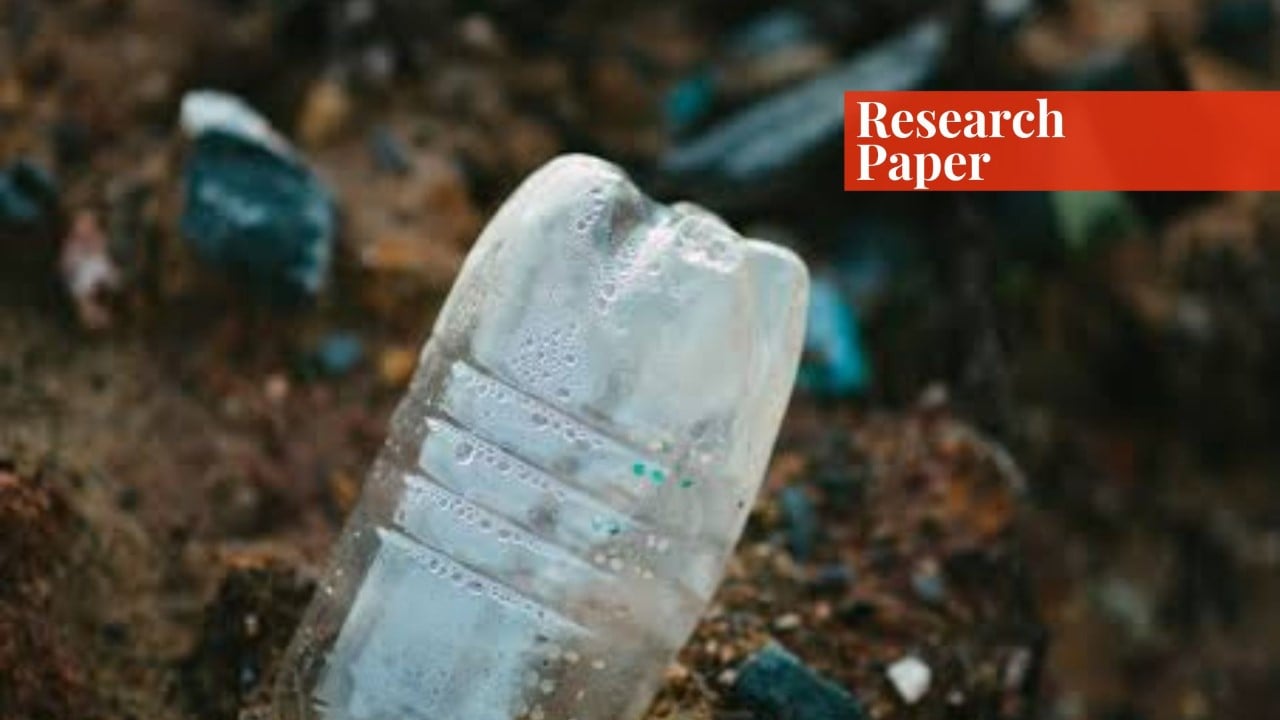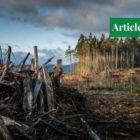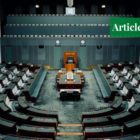Introduction
Plastics are petrochemical synthetic materials containing a long chain of polymers bonded tightly by carbon atoms and are filled with the spaces of hydrogen, sulfur, oxygen and some with the nitrogen spaces (Woodford, 2019). Plastic is well known for its versatile properties. It is considered to be flexible and durable in different forms of sizes and shapes (Proshad, 2018).
Plastic items also contain hazardous chemicals and toxic substances which can have an adverse impact on human health and the environment (Andrady, 2017). Chemical toxicity of plastic occurs when small fibers and particles less than 5mm considered microplastics leach down into the environment (Northdale, 2020).
Chemical toxicity occurs as a result of the localization of the monomers which are leached down as endogenous additives by the adsorption process as environmental pollutants (Wright, 2017). Plastic pollution affects the environment in several ways disrupting many natural cycles in the life-sustaining ecosystems (Beaumont, 2019).
Burning plastic wastes releases toxic elements in the air that degrade the air quality, affect human health, increase global warming and slowly change the climatic conditions. Humans and wildlife are exposed to plastics in their daily life from the macro-plastics composed of different polymer types and matrices (Qi, 2018).
Plastic is composed of seven types based on their physical and chemical properties: Polyethylene terephthalate (commonly recycled), high-density polyethylene (commonly recycled), Polyvinyl chloride (sometimes recycled), low-density polyethylene (sometimes recycled), Polypropylene (occasionally recycled), Polystyrene (commonly recycled but with difficulty) and Polycarbonate & Polylactide (Difficult to recycle).
Waste Management
Plastic wastes contain up to 10% of the total global municipal solid waste with an ever-increasing exponential production rate which is likely to grow over a period of time (Verma, 2016). Solid waste materials consist of rubber, food wastes, plastic, paper and metals, etcetera. Integrated solid waste management comprises a hierarchy in two parts: waste diversion and waste disposal (Gill, 2018).
It is estimated that Pakistan generates around 20 million tons of solid waste annually which can exponentially increase annually with a growth rate of 2.4 percent (Lew, 2020). Pakistan lacks many basic fundamental solid waste management practices and is unfortunately unable to practice the basic handling of waste on a large scale; only a few megacities like Karachi, Lahore and Islamabad have a working principle model for solid waste management (Gill, 2018).
Covid-19 Plastic Waste
The Covid-19 pandemic has adversely affected human health and has accelerated plastic pollution (single-use plastics) to many folds, making it difficult to manage sustainably. Preventive measures for the Coronavirus have made the world use the personal protection equipment excessively: masks, gloves, kits, disposable crockery, face shield and respirators added to the already existing plastic pollution (Livingston, 2020).
Household waste generated on a daily basis by the public using plastic items during lockdown has increased plastic pollution (Ouhsine, 2020). This pandemic has discarded around 129 billion masks and 65 billion gloves (Benna, 2020). This increase in plastic waste during Covid-19 is a burden on existing solid waste and a threat to humans and the environment (Prata, 2020).
Materials & Methods
The study design comprises the questionnaire made on the SurveyGizmo app which is a cloud base integrated feedback platform where the software is used best for the online survey. The questionnaire was designed to seek the responses by using the jumping and branching strategy in the SurveyGizmo app divided into four main sections.
The first section comprises the demographic information which provides the personal data of the respondents carried on different demographic variables. The second part was made to acquire the background information and knowledge related to plastic pollution. This part was conducted specifically to know the awareness of the public towards plastic waste generation.
The third section deals with the Covid-19 plastic burden which was subdivided further into five parts in order to know the usage and waste generation related to the personal protection equipment and plastic items: masks, gloves, kits, crockery and shoppers. It showed the qualitative and quantitative aspects of usage and consumption of plastic items during the lockdown.
The last part attributes to the concluding questions about the suggestions and recommendations from the general public. Data was collected from 335 respondents online from SurveyGizmo. The results were analyzed using the statistical software SPSS using the chi-square test on the results obtained.
Results of the Survey
Demographic Characteristics
The findings of the study showed that the demographic characteristics (gender, age and income) indicated that the majority of the respondents (68.1%) were female and 30.7% were male. 48.1% of the respondents were in the 18-24 age group, followed by 33.9% in the 25-34 age group, 6.2% of the respondents in the age group of 35-44, 3.8% were under 18, and 0.6% were above 54.
The demographic characteristic of education indicated that 33.3% of the respondents had a graduate degree, followed by 28.0% in an M-Phil educational group, 17.1% had a bachelor’s degree, 10.9% of the respondents belonged to the PhD educational group, 5.6% of the respondents belonged to the professional educational group, 1.2% of the respondents belonged to the Intermediate educational group, and 0.3% were in high school.
Bivariate statistical analysis of Reuse
Non-parametric test having an ordinal and nominal scale was applied in the questionnaire to obtain the results. A chi-square test was applied giving out the association between variables of non-standardized data and categorical group. Results indicated that table 3.2 shows that the majority of patients quarantined at home were the of the master’s group indicating that adults were being most affected by the virus in Pakistan.
Below Fig.3.3 shows the chi-square analysis association between the age groups and the reusing of gloves impacting the health. Respondents (55.6%) in the age group of 18-24 do not agree with the statement that reusing gloves impacts our health. However, the majority of the respondents (49.1%) in the same age group agree that reusing masks impacts our health.
Figure 3.4 shows the association between the income groups and the pair of gloves discarded during Covid-19. The majority of the respondents (41.2%) of the income group of 60,000-69,000 discarded their gloves many times a day during Covid-19. The association between the income and masks often discarded during Covid-19 was that majority of the respondents (35.6%) of the income group of 60,000-69,000 discarded masks daily.
The results indicated that during lockdown the public mostly used disposable plastic crockery at home. Table 3.3 shows that disposable crockery was used by females (69.1%) and males (30.9%). Table 3.4 shows that majority of the income between 60,000-69,000 discarded shoppers 5 to 10 times a day adding burden to the single-use plastic.
Discussion
The results indicated that plastic items were used more in lockdown compared to before the pandemic. Personal protection equipment was used excessively which added more burden to the solid waste management. The results showed that masks were used abundantly and frequently compared to the gloves followed by kits. The worst problem added to the solid waste was the usage of plastic bags openly during lockdown despite there being a ban on it.
The majority of the respondents showed an affirmative response to the poor condition of waste management in their local vicinity. The research gap being identified was the lack of studies on the management of the discarded personal protection equipment and mismanagement of the plastic waste during the lockdown. No specified treatment in Pakistan has been identified to treat the contaminated plastic waste which has been discarded during the Covid-19 period.
Conclusion
The report concludes that the general estimation that the public had for producing plastic waste especially personal protection equipment had a major impact on solid waste management. It added more burden to the already existing plastic pollution. Discarding these plastic items had a negative impact on public health and the environment.
There should be sustainable practices for keeping waste management in control. Government should take proper measures and steps to reduce plastic waste, primarily single-use plastic pollution. Practices of safe handling of discarded plastic items used in Covid-19 should be addressed in order to protect the public and the environment from adverse impacts.
References
- Andrady, A. L. (2017). Additives and Chemicals in Plastics. The handbook of Environmental Chemistry, 78.
- Beaumont, N. J. (2019). Global ecological, social and economic impacts of marine plastic. Marine Pollution Bulletin, 185-195.
- Benna, S. A. (2020). Availability of COVID-19 information from national plastic surgery society websites. Public Health and Emergency Collection.
- Cai, L. (2019). Influence of physicochemical surface properties on the adhesion of bacteria onto four types of plastics. Science of The total environment, 1101-1107.
- Gill, Y. Q. (April, 2018). Plastic Solid Waste Management in Pakistan. PAKPLAS Magzine. https://www.researchgate.net/publication/328118104_Plastic_Solid_Waste_Management_in_Pakistan_-_PAKPLAS_Magazine-2018
- Jaromir, J. (2020). Minimising the Present and Future Plastic waste, energy and environmental footprints related to COVID-19. Renewable and Sustainable Energy.
- Lew, R. (2020). Solid Waste Management in Pakistan. Bioenergy .
- Livingston, E. (2020). Sourcing Personal Protective Equipment During the COVID-19 Pandemic.
- Northdale. (2020). 7 Different types of plastics. A & C Plastic Inc.
- Ouhsine, O. (2020). Impact of COVID-19 on the qualitative and quantitative aspect of household solid. Global Journal of Environmental Science and Management.
- Prata, J. C. (2020). COVID-19 Pandemic Repercussions on the Use and Management of Plastics. ACS publication, 7760-7765.
- Proshad, R. (2018). Toxic effects of Plastic on human health and environment.
- International Journal of Health.
- Qi, Y. (2018). Macro- and Micro-plastics in soil-plant system. Science Of The Total Environment, 1048-1056.
- Silva, A. L. (2020). Policy solutions based on redesign and reduction of single-use plastics and personal protective equipment. Science Of The Total Environment.
- Verma, R. (2016). Toxic Pollutants from Plastic Waste- A Review. Procedia Environmental Sciences, 701-708.
- Woodford, C. (November, 2019). Plastics. Explain That Stuff.
- Wright, S. L. (2017). Plastic and Human Health: A Micro Issue? Environmental Science and Technology, 6634-6647.
If you want to submit your articles, research papers, and book reviews, please check the Submissions page.
The views and opinions expressed in this article/paper are the author’s own and do not necessarily reflect the editorial position of Paradigm Shift.


















